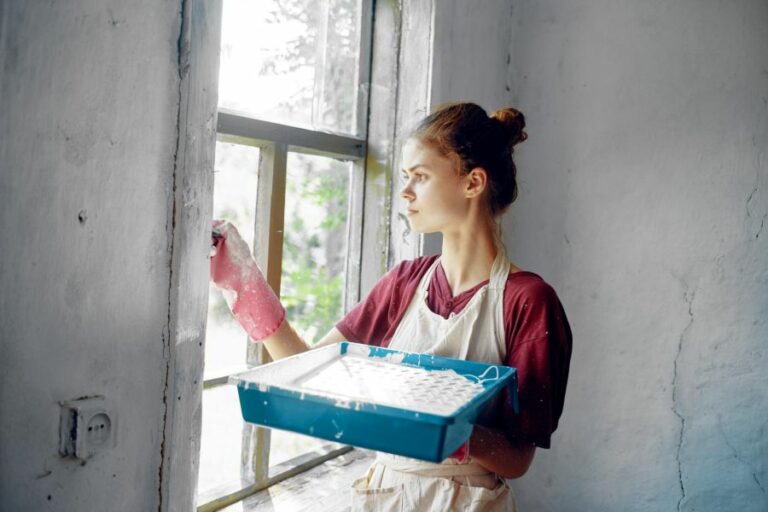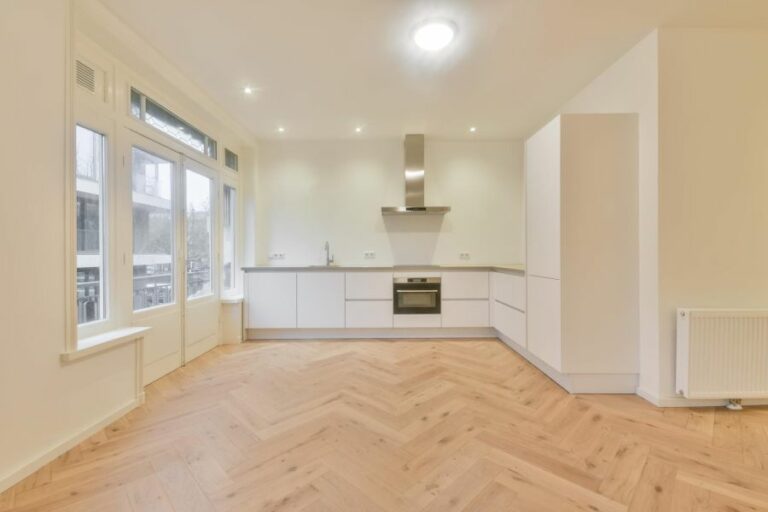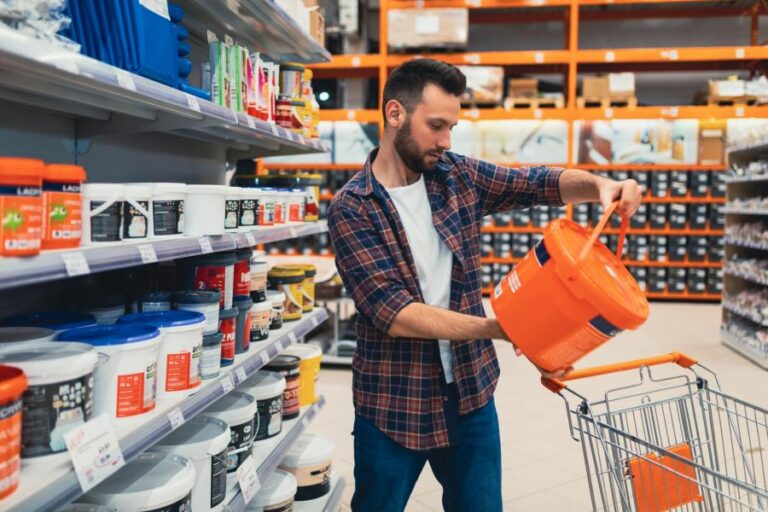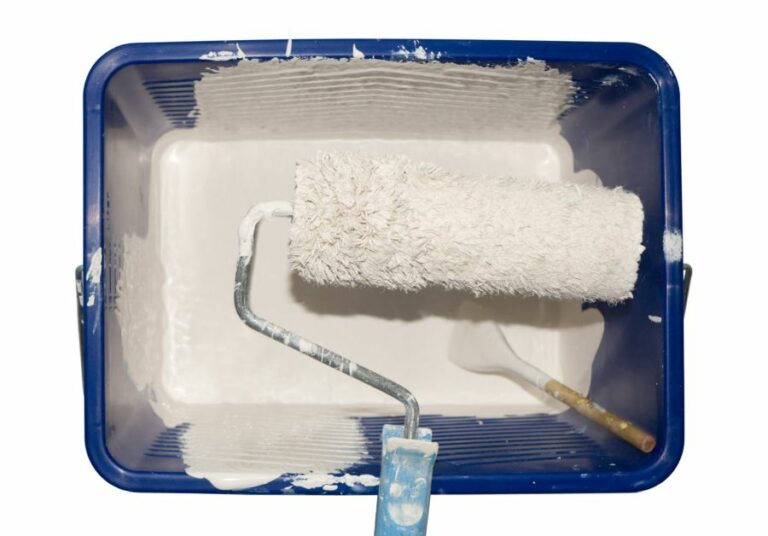Long-Lasting Oil-Based Indoor Paints, 25 Things You Should Know
We all know how important it is to keep our indoor spaces looking fresh and attractive. But did you know that long-lasting oil-based indoor paints are the answer to maintaining a beautiful and durable finish? Our expertise in this area will guide you through the benefits of using these highly effective products.
Long-lasting oil-based indoor paints:
Oil-based indoor paints provide exceptional durability, resistance to wear and tear, and a high-gloss finish with vibrant colors. They are self-leveling, easy to clean, and suitable for high-traffic areas like hallways, kitchens, and bathrooms. When selecting such paints, consider surface type, VOC levels, and cost. Recommended brands include Benjamin Moore, Sherwin-Williams, and PPG Paints.

Discover the remarkable benefits of long-lasting oil-based indoor paints! Unravel the secret behind their durability, superior finish, and ease of application. Read on to elevate your home’s aesthetics and explore top paint brands in the market. Don’t miss out!
Contents
- 1 Durable Oil-Based Interior Paints for Longevity
- 2 The Lifespan of Oil-Based Paint: How Long it Endures?
- 3 Most Durable Paint Options for Walls
- 4 Oil-Based Paint: Wall Longevity and Durability
- 5 Top Wall Paints for Maximum Durability and Longevity
Durable Oil-Based Interior Paints for Longevity
When it comes to selecting the perfect paint for your home or office space, longevity and durability are often at the top of the list of considerations. Oil-based indoor paints have long been a popular choice due to their many benefits.
• Advantages of Oil Based Indoor Paints
– Durability and Resistance
Oil-based indoor paints are known for their exceptional durability and resistance to wear and tear. Their long-lasting finish can withstand high-traffic areas, making them ideal for areas such as hallways, kitchens, and bathrooms.
Additionally, oil-based paints offer excellent resistance to moisture, mildew, and staining, providing a long-lasting and attractive appearance.
– High Gloss and Vibrant Colors
Another advantage of oil-based paints is their ability to achieve a high-gloss finish, which can make any space look bright and clean. This type of paint is also renowned for its vibrant and rich colors, providing a professional and polished look that enhances any interior design.
– Self-Levelling
Oil-based indoor paints are self-leveling, which means that they will naturally even out any brush strokes or roller marks during application. This results in a smooth and flawless finish that is particularly useful for painting surfaces such as woodwork, doors, and trim.
• Application and Maintenance
– Surface Preparation
Before applying oil-based indoor paint, it is essential to properly prepare the surface to ensure the best possible adhesion and finish. This may include cleaning the surface, sanding, and applying a primer, particularly for porous surfaces or surfaces with existing paint.
Primer selection is also essential, as using a mismatched primer can lead to poor adhesion or other issues with the paint job.
– Application Techniques
When it comes to applying oil-based indoor paints, the proper technique and tools can greatly affect the final outcome. Using a high-quality brush or roller designed specifically for oil-based paints will provide the best results.
Additionally, applying thin, even coats and allowing each coat to dry properly (typically 24 hours) will result in a smoother and more durable finish.
– Maintenance and Cleaning
Oil-based indoor paints are generally easy to clean, requiring only mild soap and water for most common household stains. It is essential to avoid using harsh chemicals or abrasive materials on the painted surface, as they may damage the paint finish.
As for maintenance, touch-ups and paint-specific cleaners can help keep your space looking fresh and polished.
• Factors to Consider when Selecting Oil Based Indoor Paints
– Type of Surface
Different surfaces may require different types of oil-based paints. For example, some oil-based indoor paints are specifically formulated for use on woodwork and trim, providing superior adhesion and durability. It is essential to ensure that the paint selected is suitable for the intended surface.
– Environmental and Health Considerations
Oil-based indoor paints often contain higher levels of volatile organic compounds (VOCs) compared to water-based paints. These VOCs can contribute to indoor air pollution and may cause health concerns for some individuals.
To minimize these risks, selecting low- or no-VOC oil-based indoor paints and ensuring proper ventilation during application is crucial.
– Cost
While oil-based indoor paints are typically more expensive than water-based alternatives, their longevity and durability can provide long-term cost savings.
However, it is essential to strike a balance between quality and affordability. Investing in high-quality oil-based paint from a reputable manufacturer will likely result in a better overall paint job.
• Recommended Brands
Based on personal experience and industry reputation, here are some recommended brands of oil-based indoor paints:
Remember to consider factors such as surface type, durability, aesthetics, environmental considerations, and cost when selecting the best oil-based indoor paint for your specific needs.
In conclusion, choosing the right long-lasting oil-based indoor paint can positively impact the appearance, durability, and maintenance of your space.
By understanding the benefits, proper application techniques, and factors to consider, you can make an informed decision and enjoy the attractive and long-lasting results of oil-based indoor paint.
The Lifespan of Oil-Based Paint: How Long it Endures?
• Introduction to Oil-Based Paint Durability
Oil-based paints are widely known for their durability and long-lasting finish, which makes them a great choice for many surfaces and projects. However, the question of how long oil-based paint can last is often asked by homeowners and professionals alike.
• Factors Affecting the Lifespan of Oil-Based Paint
– Environmental Conditions
The environment in which the paint is stored plays a crucial role in determining its lifespan. For example, oil-based paints should be stored in a cool, dry place away from direct sunlight and extreme temperatures.
Exposure to hot and cold temperatures can cause the paint to thicken or separate, affecting its quality and performance. Moreover, it is important to avoid storing paint in damp or humid areas, as moisture can also degrade the quality of oil-based paints.
– Quality of the Paint
Superior quality paints generally have longer lifespans, while cheaper paints have a shorter shelf life. Thus, investing in high-quality oil-based paints from reputable manufacturers is key to ensuring that you can use the paint years down the road.
– Proper Storage
Storing oil-based paint properly is essential for maintaining its lifespan. Store paint cans in a cool, dry place away from direct sunlight and extreme temperatures. Ensure the paint’s can is sealed properly to prevent air exposure, which can affect the quality of the paint.
An excellent tip for sealing cans is to place a piece of plastic wrap between the can and the lid before closing it. This can create a better seal, preventing air from entering or escaping the can.
• Estimating the Shelf Life of Oil-Based Paint
While it’s hard to pinpoint an exact expiration date, oil-based paints generally have a shelf life of around 5 to 10 years. High-quality, well-stored paint is more likely to last closer to 10 years, while cheaper or improperly stored paint may not last more than 5 years.
• Signs That Your Oil-Based Paint Has Expired
Here are some indicators that your paint may no longer be usable:
– Separation
Over time, the ingredients in oil-based paints may separate, leading to a layer of oil at the top of the can. A mild amount of separation is normal and can be resolved by mixing the paint well. However, if the separation is significant or if the paint is resistant to mixing, it is likely expired.
– Lumps and Clumps
When the paint has been exposed to air, it may start to develop lumps or clumps that cannot be broken up with mixing. If the paint has a lumpy, congealed texture throughout the entire can, it is no longer usable.
– Foul Odor
Spoiled paint may emit a foul or rancid odor, which is a clear indication that it is no longer suitable for use. Trust your sense of smell if the paint doesn’t smell like it once did or has an unusual odor. It is best to dispose of it.
• Proper Disposal of Oil-Based Paint
Old or expired oil-based paint should never be poured down the drain. Instead, check with your local waste management facility to find out the proper method for disposing of hazardous materials. In some cases, local recycling centers might even accept old paint cans for recycling or repurposing.
• Final Thoughts
When stored correctly and cared for, oil-based paint can have a lifespan of 5 to 10 years, depending on the quality of the paint and the environmental conditions. Always store paint in a cool, dry place away from direct sunlight to maintain its quality.
Before using older paint, check for signs of expiration, such as separation, lumps, or a foul odor. Following these guidelines will help ensure that your oil-based paint remains usable for years to come.
Oil-based Paint Type | Shelf Life (Unopened) | Shelf Life (Opened) |
|---|---|---|
Alkyd paint | 2-5 years | 1-2 years |
Linseed oil paint | Up to 10 years | 2-3 years |
Tung oil paint | 3-5 years | 1-3 years |
High-gloss enamel | 2-4 years | 1-2 years |
Most Durable Paint Options for Walls
As an experienced paint professional, I’ve had countless customers ask me: what type of paint is the most long-lasting for a wall? It’s an important question, as the right paint can make all the difference in the appearance and durability of your walls.
• Acrylic Latex Paint: The Top Choice for Durability
When it comes to long-lasting paint, acrylic latex paint is the top choice for several reasons. Not only does it provide a durable finish, but it’s also exceptionally resistant to peeling, chalking, and fading.
– Advantages of Acrylic Latex Paint
Some of the main advantages of acrylic latex paint include:
- Durability: Acrylic latex paint is incredibly durable, thanks to its unique formula. It adheres well to most surfaces, which helps prevent peeling and flaking.
- Moisture Resistance: This type of paint is highly resistant to moisture, making it an excellent option for areas prone to high humidity, such as bathrooms and kitchens.
- Environmental Friendliness: Acrylic latex paint is low in volatile organic compounds (VOCs), which means it emits fewer harmful chemicals into the air.
– Tips for Using Acrylic Latex Paint
For the best results when using acrylic latex paint, follow these recommendations:
- Proper Surface Preparation: Make sure the surface you’re painting is clean, dry, and free of any loose paint, dirt, or dust.
- Quality Primer: If you’re painting a surface for the first time or covering up dark colors, apply a high-quality primer to create a uniform base for the acrylic latex paint.
- Multiple Coats: Apply at least two coats of acrylic latex paint for a smooth, even finish.
• Oil-Based Paint: An Alternative for Some Applications
Although acrylic latex paint is the most recommended option for its long-lasting qualities, oil-based paint can serve as an alternative in specific situations.
– Advantages of Oil-Based Paint
- Smooth Finish: Oil-based paint creates a smooth, even surface that can be ideal for certain areas, such as doors, trim, and furniture.
- Stain Resistance: Oil-based paint is highly resistant to stains, so it can be an excellent choice for high-traffic areas.
– Disadvantages of Oil-Based Paint
- Less Durable: In general, oil-based paint is less durable than acrylic latex paint, making it less suitable for long-lasting wall applications.
- Environmental Impact: Oil-based paint contains higher levels of VOCs, making it a less environmentally friendly option.
– Tips for Using Oil-Based Paint
If you decide to use oil-based paint, keep these tips in mind:
- Proper Ventilation: Make sure the area you’re painting has adequate ventilation, as oil-based paint emits strong fumes.
- Stroke Technique: Use long, even brush strokes when applying oil-based paint to achieve a smooth finish.
- Cleaning Up: Be sure to have mineral spirits or paint thinner handy to clean tools and spills.
• Paint Finishes and Their Impact on Durability
Another factor to consider when choosing long-lasting paint is the finish. Paint finishes can impact durability and should be chosen based on the room’s function and the desired appearance. Here’s a quick overview of common paint finishes and their characteristics:
- Flat: This low-sheen finish provides a smooth, elegant look. However, it’s less durable than other finishes and can be difficult to clean.
- Eggshell: Offering a soft sheen, eggshell finishes are more durable than flat finishes and can be easily cleaned.
- Satin: With a slight sheen, satin finishes are highly durable and can be easily cleaned, making them ideal for high-traffic areas.
- Semi-Gloss: A highly durable and easy-to-clean option, semi-gloss finishes are well-suited for kitchens, bathrooms, and trimwork.
- Gloss: Although it provides a highly durable and easy-to-clean finish, gloss paint can highlight imperfections on the wall’s surface.
• Final Thoughts
In conclusion, acrylic latex paint is the most long-lasting paint for walls due to its durability, moisture resistance, and environmental friendliness. However, oil-based paint can be a suitable alternative for certain applications like doors, trim, and furniture.
Keep in mind the importance of proper surface preparation, using a high-quality primer, and applying multiple coats of paint. Additionally, consider the room’s function and desired look when choosing your paint’s finish.
For additional information on the various types of paint, you can refer to this helpful resource from Consumer Reports, a trusted source for unbiased product reviews and ratings.
Paint Type | Longevity | Advantages | Disadvantages |
|---|---|---|---|
Acrylic Latex | 10-15 years | Water-based, durable, easy to clean | Slightly less adhesion compared to oil-based paints |
Oil-based | 15-20 years | Excellent adhesion, rich colors, great coverage | Longer drying time, strong odor, difficulty in cleaning |
Epoxy | 15-20 years | Resistant to chemicals, moisture, and abrasion; glossy finish | Requires correct mixing and safety precautions, strong odor |
Enamel | 10-15 years | Hard, durable, and washable; available in water-based and oil-based varieties | Oil-based enamel has a strong odor and longer drying time |
Textured | 7-10 years | Adds dimension and interest to walls, can hide imperfections | Can be difficult to clean, harder to touch-up |
Oil-Based Paint: Wall Longevity and Durability
In the world of painting, oil-based paints have been highly regarded for their durability and long-lasting results. Known for exceptional adhesion and resistance to wear, oil-based paint provides a protective layer for walls, both in interior and exterior settings.
• Longevity of Oil-Based Paint: Factors to Consider
– Quality of the Paint
High-quality oil-based paints typically last longer than their low-quality counterparts. Investing in premium paint products generally ensures better adhesion, resistance to fading, and overall durability.
It is recommended to opt for reputable paint brands with a proven track record of providing superior performance.
– Surface Preparation
Proper surface preparation is crucial to the longevity of oil-based paint on walls. This includes cleaning, repairing any damage or cracks, and applying the appropriate primer. Without a well-prepared surface, paint may not adhere properly, leading to peeling, flaking, or premature wear.
– Application Techniques
Using the correct tools and application methods is essential for the longevity of oil-based paint. Brushes or rollers specifically designed for this type of paint should be used, as they will help achieve even coverage and a smooth finish.
Additionally, thin, even layers of paint are recommended, which can then be built up, to ensure a longer-lasting result.
– Environmental Factors
External elements such as temperature, humidity, and exposure to sunlight play a significant role in determining the lifespan of oil-based paint on walls. Harsh weather conditions, constant exposure to direct sunlight, or high humidity levels can negatively impact the paint’s durability.
• Typical Lifespan of Oil-Based Paint on Walls
With all factors considered, oil-based paint has an average lifespan of 10-15 years on interior walls if properly maintained. For exterior walls, the longevity can vary depending on environmental factors, with an average of 7-10 years.
It is worth noting that some premium oil-based paints may last even longer, depending on their formulation and other factors.
• How to Maintain and Maximize the Lifespan of Oil-Based Paint
– Proper Surface Maintenance
Regular cleaning of the painted walls can help extend the longevity of the paint. This involves using a soft cloth or sponge with mild soap and water to gently remove any dirt, dust, or grime that can accumulate over time.
– Protecting Walls from Moisture
Controlling humidity levels within the interior space and ensuring proper ventilation can help prevent moisture-related issues that can affect the lifespan of the paint.
For example, installing a quality exhaust fan in rooms with high moisture, such as bathrooms or laundry rooms, can help keep the walls dry and prevent peeling or flaking.
– Addressing Damage Promptly
Inspect painted walls regularly for any signs of damage or wear, such as cracking, peeling, or fading. Prompt repairs can help prevent further deterioration and ensure that the paint remains in good condition.
For more information on how to repair damaged paint, refer to this helpful guide from the Family Handyman.
– Proper Painting Practices
When repainting walls, carrying out proper surface preparations and abiding by the recommended practices regarding the application of oil-based paint will help ensure a long-lasting finish.
This includes sanding any glossy surfaces to promote better adhesion, using the appropriate primer, and allowing for the recommended drying time between coats.
• In Conclusion
Oil-based paint, when applied and maintained correctly, is a durable and long-lasting option for both interior and exterior walls. By considering factors such as paint quality, surface preparation, application techniques, and environmental elements, the lifespan of oil-based paint can be maximized.
Regular maintenance, humidity control, and promptly addressing damage can help ensure that your painted walls stay in pristine condition for years to come.
Oil-Based Paint | Durability on Walls |
|---|---|
Interior | 10-15 years |
Exterior | 7-10 years |
Top Wall Paints for Maximum Durability and Longevity
Painting the walls of your home or office space can transform the entire ambiance, but it is essential to choose the right kind of paint. To ensure longevity and minimal maintenance over the years, some factors must be considered when selecting the best paint to ensure durability on walls.
• Types of Durable Paints
– Water-based Paints
Water-based paints have gained popularity in recent years due to their environmentally friendly properties, low odor, and ease of cleaning with water. These paints provide excellent adhesion to various surfaces, and they generally dry quicker than oil-based paints.
– Oil-based Paints
Oil-based paints offer excellent durability, as they bond well to surfaces and are resistant to wear and tear. These paints are prone to yellowing over time, though, and have a strong odor during application. The cleanup process for oil-based paints usually involves harsh chemicals.
• Understanding Paint Finishes
The finish of the paint plays a crucial role in the durability and overall appearance of the walls. Paint finishes can be categorized as matte, eggshell, satin, semi-gloss, and high-gloss, with each offering different levels of sheen and durability.
– Matte Finish
A matte finish has a low level of sheen and provides a non-reflective surface. It is ideal for hiding wall imperfections due to its excellent ability to hold pigments. However, it is less durable compared to other finishes and requires more frequent cleaning, making it less suitable for high-traffic areas.
– Eggshell Finish
The eggshell finish has a slight sheen and is more durable than the matte finish. It is a better option for walls with some imperfections, and it is easier to clean. An eggshell finish is suitable for living rooms, bedrooms, and hallways.
– Satin Finish
A satin finish offers a smooth and velvety appearance with a medium sheen level. It is more durable and easier to clean compared to eggshell and matte finishes. Satin finishes are ideal for high-traffic areas such as kitchens, bathrooms, and children’s rooms.
– Semi-gloss Finish
The semi-gloss finish has a higher sheen and is more reflective compared to satin finishes. It is highly durable, stain-resistant, and easy to clean, making it suitable for areas such as kitchens, bathrooms, and laundry rooms.
– High-gloss Finish
A high-gloss finish is the most reflective and durable of all finishes. It is highly resistant to stains and moisture, making it ideal for areas that experience extreme wear and tear. However, it is not recommended for walls with imperfections, as the high-gloss finish will accentuate any flaws.
• Identifying the Best Durable Paint for Walls
Given the range of factors mentioned above, the top choice for durable wall paint would be a high-quality, water-based paint with a satin or semi-gloss finish. Water-based paints are more environmentally friendly, have low odor, and dry quickly.
The ideal finish depends on factors such as the type of room, the amount of traffic, and the level of surface imperfections.
– Our Recommendation: Water-based Satin or Semi-gloss Finish
We recommend using water-based paint with a satin or semi-gloss finish for most walls in your home or office space. These finishes offer a balance between durability, sheen, and ease of cleaning.
According to Consumer Reports, the top-rated paint brands for durability, and long-lasting performance include Behr, Benjamin Moore, and Sherwin-Williams. It is essential to invest in high-quality paint to ensure the best results.
• Proper Surface Preparation and Application
Even the most durable paint will not perform well if the surface is not prepared correctly or if the paint application is subpar. To achieve the best results, follow these steps:
- Clean the walls thoroughly, removing any dust, dirt, or grease.
- Fill in any cracks or holes with a suitable filler and sand them smoothly.
- Apply a layer of primer to ensure proper adhesion of the paint.
- Apply the paint in thin, even coats, allowing adequate drying time between coats.
By carefully selecting the right type of paint and following proper surface preparation and application techniques, you can achieve durable, long-lasting walls that enhance the beauty of your home or office space.
Paint Type | Durability | Features | Recommended For |
|---|---|---|---|
Acrylic Latex | High | Water-based, easy to clean, quick-drying, low VOCs | Living rooms, bedrooms, kitchens, bathrooms |
Oil-based | Very High | Smooth finish, stain-resistant, hard-wearing | High-traffic areas, doors, trim, cabinets |
Epoxy | Extremely High | Waterproof, chemical-resistant, long-lasting | Garages, basements, workshops |







